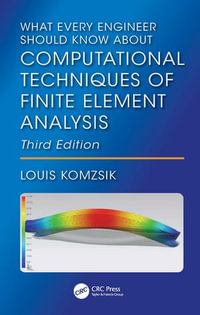
eTEXT
Structural Synthesis of Parallel Robots
Part 2: Translational Topologies with Two and Three Degrees of Freedom
By: Grigore Gogu
eText | 15 February 2009
At a Glance
eText
$249.00
or
Instant online reading in your Booktopia eTextbook Library *
Read online on
Desktop
Tablet
Mobile
Not downloadable to your eReader or an app
Why choose an eTextbook?
Instant Access *
Purchase and read your book immediately
Read Aloud
Listen and follow along as Bookshelf reads to you
Study Tools
Built-in study tools like highlights and more
* eTextbooks are not downloadable to your eReader or an app and can be accessed via web browsers only. You must be connected to the internet and have no technical issues with your device or browser that could prevent the eTextbook from operating.
ISBN: 9781402097942
ISBN-10: 1402097948
Published: 15th February 2009
Format: PDF
Language: English
Publisher: Springer Nature
You Can Find This eBook In
This product is categorised by
- Non-FictionSciencePhysics
- Non-FictionEngineering & TechnologyMechanical Engineering & MaterialsMechanical Engineering
- Non-FictionEngineering & TechnologyMechanical Engineering & MaterialsMaterials ScienceMechanics of SolidsStress & Fracture
- Non-FictionEngineering & TechnologyTechnology in GeneralTechnical Design
- Non-FictionEngineering & TechnologyElectronics & Communications EngineeringElectronics EngineeringAutomatic Control EngineeringRobotics
- Non-FictionEngineering & TechnologyEnergy Technology & EngineeringElectrical Engineering























